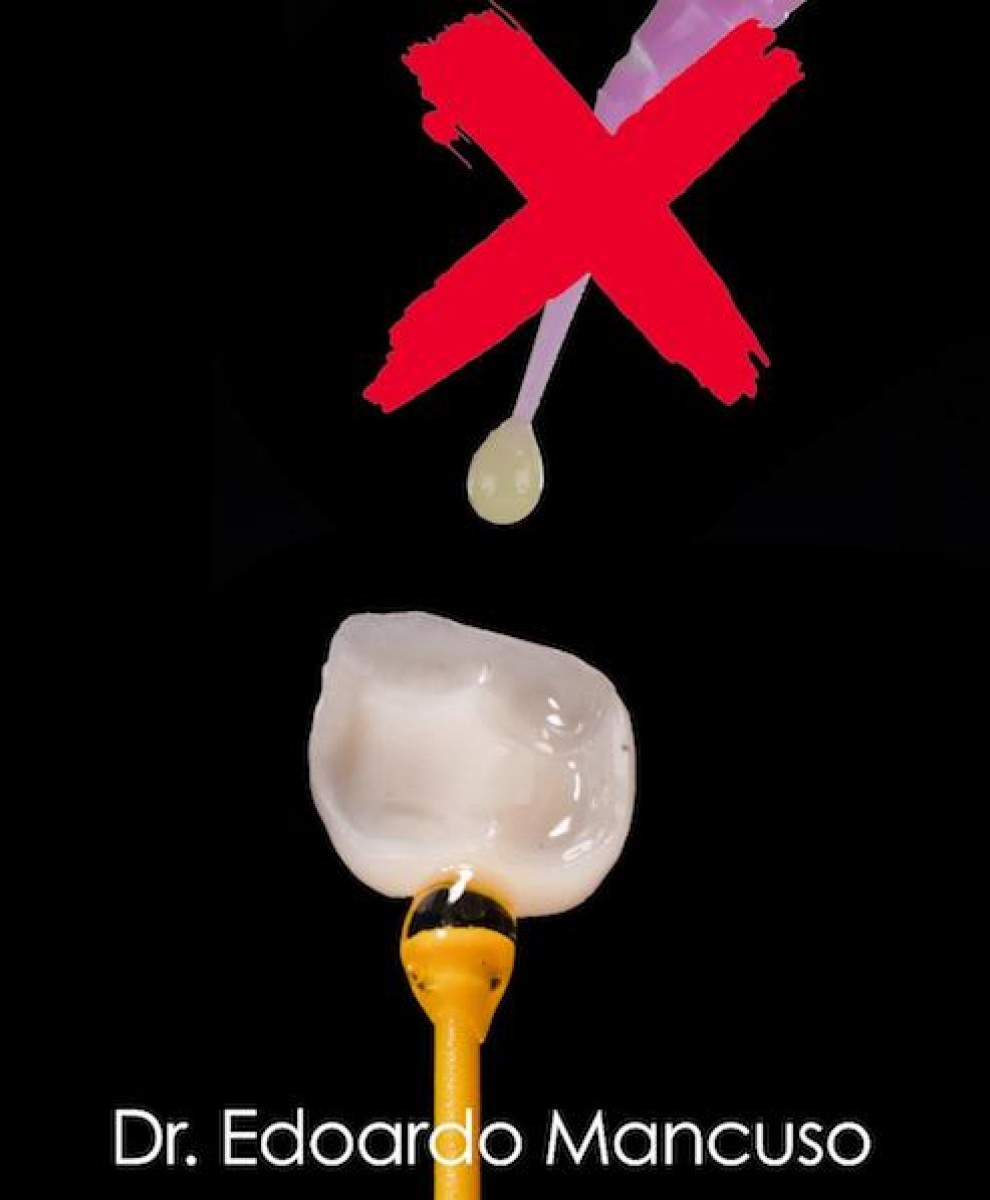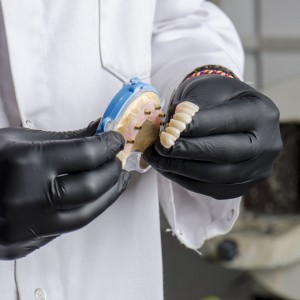
DO WE NEED AN ULTERIOR ADHESIVE LAYER BETWEEN ETCHED AND SILANIZED GLASS CERAMICS AND RESIN-BASED MATERIALS?
Edoardo Mancuso
Glass-ceramics are broadly used among dentists as restorative materials, mainly because they can be adhesively bonded to dentin and enamel. These etchable materials include feldspathic-reinforced, leucite-reinforced, and lithium disilicate-reinforced ceramics.
The pretreatment that has been reported to provide the highest bond strength values for the glass-ceramic surface is the etching with hydrofluoric acid (HF) followed by the application of a silane-coupling agent. However, some concern has been expressed whether the viscosity and wettability of the cement might prevent an interaction with the conditioned and silanized glass-ceramic surface.
Therefore, the use of an intermediate adhesive layer has been proposed before applying the resin cement to improve the permeation of the adhesive components in the irregularities of the ceramic surface. Although different studies have been published on the matter, the lack of consensus has created confusion among dentists seeking to choose the ideal technique.
To address this problem Dr. Lucianne Cople Maia and her team have recently written a systematic review to better define if an adhesive layer application could improve the bond strength of etched and silanized glass-ceramics to resin-based materials.
MATERIAL AND METHODS
In the article 3 different electronic databases were searched to select in vitro studies comparing bond strength values of etched and silanized glass-ceramics bonded with or without an adhesive layer. No publication year or language restriction was applied. Finally, the association between bond strength (shear/microshear or tensile/microtensile) and an adhesive layer application on non-aged and aged specimens were analyzed.
RESULTS
In total, 5250 studies were identified by Dr. Maia and her team. Of 4727 potentially eligible studies, 54 were selected for full-text analysis, and 15 were included for qualitative synthesis; of these, 14 were used in the meta-analysis. All the 15 included studies were published between 1987 and 2018, with only 1 published before 2000.
In the article, for shear or microshear studies, both non-aged and aged specimens presented no statistically significant difference between groups bonded with or without an adhesive layer application. For microtensile studies, both non-aged and aged specimens exhibited higher values without an adhesive application.
DISCUSSION
The authors of the article suggest that the systematic review did not provide sufficient evidence justifying the use of an adhesive system. The adhesive layer application had not improved the bond strength of etched and silanized glass-ceramics to a resin-based material.
The authors also added in the discussion that an interesting factor that should be deeply investigated is the composition of the adhesive and cement used during restoration with glass-ceramics. Indeed, the adhesives available today are in either hydrophobic or hydrophilic forms. Most of the current bonding agents include hydrophilic monomers and solvents to promote adhesion to dentin. Greater stability for hydrophobic adhesives is expected, as water would not be able to penetrate the adhesive interface. For this reason, in the article, is advised that the adhesive composition should be considered as a confounding variable in the study.
CONCLUSIONS
The systematic review and meta-analysis ends drawing the following conclusions:
1. An adhesive layer application did not improve the bond strength of etched and silanized glass-ceramics to resin-based materials.
2. The results may have been influenced by the type of in vitro test applied and the medium and high heterogeneity of the meta-analysis.
3. Further studies with standard methodologies, especially the aged ones, need to be conducted.
4. The influence of an adhesive layer application should be evaluated under clinical conditions.
Reduction of clinical steps without compromising the quality of restorations is always desirable in dentistry. Not just for the shortening of chair time, but because the addition of one unmotivated step may increase the possibility to make a mistake. During the adhesion procedures, if one of the steps is not correctly performed, the long-term success of the restoration can be compromised. It is then extremely important to define and analyze all of the steps that can be unnecessary or even damaging for the longevity of our restorations.
For additional information: Does the application of an adhesive layer improve the bond strength of etched and silanized glass-ceramics to resin-based materials? A systematic review and meta-analysis
 Related articles
Related articles
Prosthodontics 31 October 2025
Rapid Prototyping Technologies and their Applications in Prosthodontics, a Review of Literature
The early computer-aided design/computer-aided manufacturing (CAD/CAM) systems were relied exclusively on subtractive methods.
Prosthodontics 13 October 2025
Periodontics, implantology, and prosthodontics integrated: the zenith‐driven rehabilitation
A customized treatment plan is important to reach results that will satisfy the patient providing esthetics, function, and long-term stability.
Prosthodontics 26 September 2025
This article aims to review the status, challenges, and directions of environmentally sustainable oral healthcare by focusing on the dental materials and procedures used in prosthodontics.
Prosthodontics 11 September 2025
New paradigms in prosthodontic treatment planning: a literature review
New treatment modalities have expanded the choices available to prosthodontists and their patients.
Prosthodontics 12 August 2025
Previous research regarding dental students has found modest predictive value in preclinical didactic course grades in predicting clinical performance, but systematic assessment of students’...
 Read more
Read more
Much like EMTs rushing to the scene after an accident, stem cells hurry to the site of a skull fracture to start mending the damage. A new finding has uncovered the signaling mechanism that triggers...
Products 05 November 2025
SimplyTest has launched a groundbreaking saliva-based test to detect high-risk strains of oral human papillomavirus (HPV), a major cause of oropharyngeal cancers.
News 05 November 2025
Perimetrics, Inc., a dental technology company pioneering quantitative diagnostics, announced today that the U.S. Food and Drug Administration (FDA) has granted clearance for the InnerView...
News 05 November 2025
On October 15, open enrollment for Medicare began nationwide. Hundreds of thousands of seniors in New Jersey will once again face the challenge of finding the right Medicare coverage, including the...
Digital Dentistry 04 November 2025
Digitalisation is an expanding field in dentistry and implementation of digital teaching methods in dental education is an essential part of modern education.















